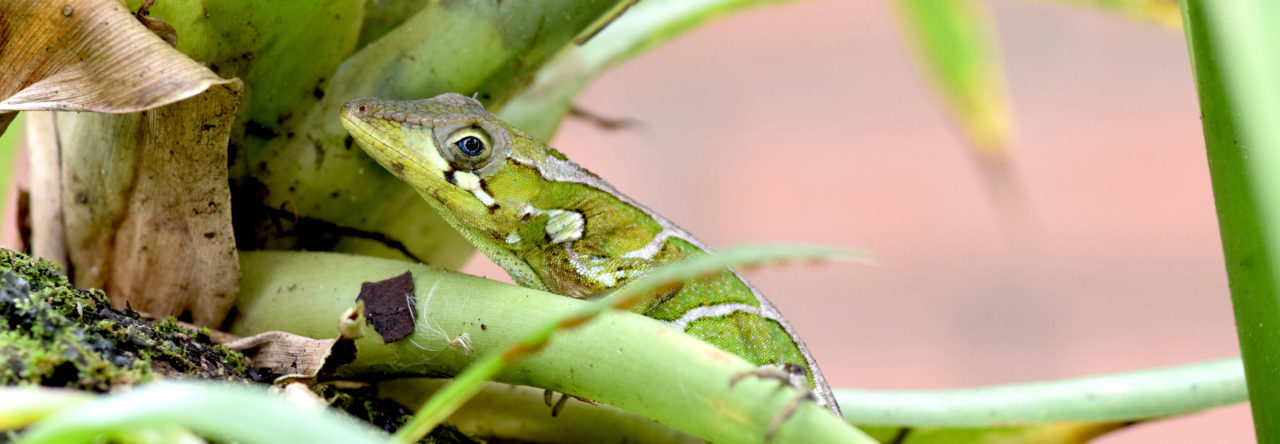
Anolis biporcatus, one of the prettiest of anoles. Photo by Thomas Marent
Anolis biporcatus is, if I’m not mistaken, the largest mainland beta/Norops anoles, attaining a length of ca. 100 mm snout-vent. In addition, it has an enormous geographic distribution, ranging from southern Mexico to Ecuador. In a new paper in Salamandra, a team of New Mexican and Ecuadorian biologists headed by Janet Armstead have sliced off part of the species, raising the Ecuadorian/Colombian A. biporcatus parvauritus to species status. They make this decision based on a detailed analysis of morphology and molecular data. Their data also find deep genetic subdivisions within A. biporcatus in Costa Rica, suggesting that there may be more cryptic species awaiting recognition.
A key difference between the species is the color of the distal scales on the dewlap of males, white in biporcatus, black in parvauritus.
Note, too, that like many mainland anoles, the males and females have very different dewlaps.
Here’s the distribution of the two species:
- Evolution in Real Time on Lizard Island - March 23, 2025
- Spider Snags Adult Anolis osa - March 22, 2025
- An Homage to the Green Anoles of New Orleans - March 21, 2025





Leave a Reply